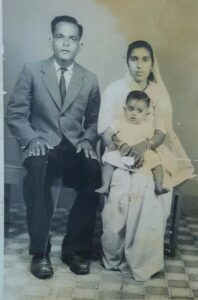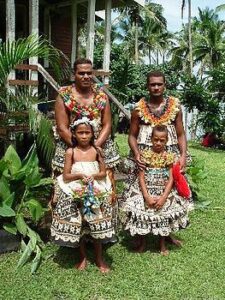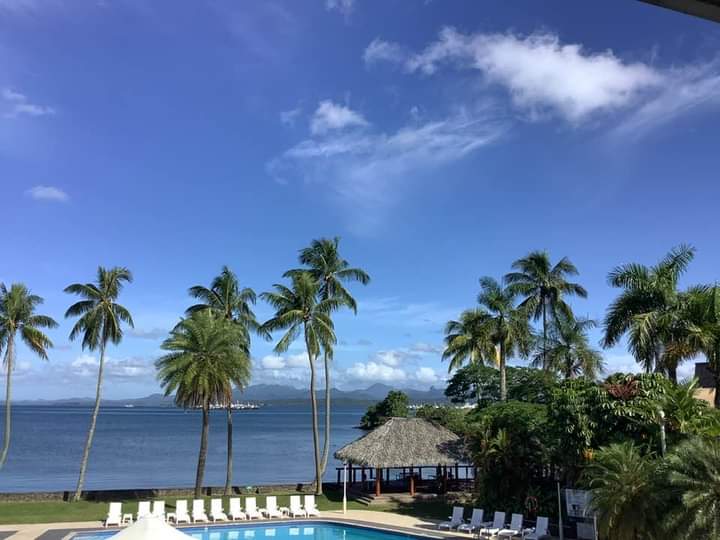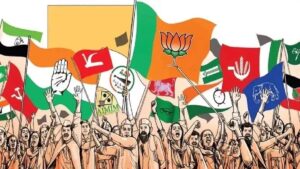Fiji, a cluster of 333 tropical islands situated in the heart of the South Pacific, is widely recognized for its distinct and diverse culture, often referred to as “A Mini India.” This cultural identity has its roots in the ancestors who left India as indentured labourers around two centuries ago, and Fiji has proudly preserved this heritage to this day.
In contrast to its neighboring landmass, Fiji has been inhabited for a relatively short period of approximately 3500 years. The first settlers, the Melanesian people, introduced a diverse range of food and agricultural practices as they journeyed to the South Pacific archipelago. Along with these practices, they introduced the distinctive Lapita pottery.

Sourced: “Stunning Beach Sunset: A Breathtaking View”
The initial settlers of Fiji established hierarchical communities based on lineage and personal merit. They formed geographical and familial clans and forged alliances and rivalries within their network.
The relationship between India and Fiji dates back to 1879, when Indian labourers were brought to Fiji under the indenture system to work on sugarcane plantations. The migration of Indian labourers to Fiji, their living and working conditions, and how the new environment affected their traditional attitudes towards caste, religion, language, and more. It also examines how traditional Indian society gradually transformed and how the range of occupations diversified over time.
Fiji Hindustani, also known as Fiji Hindi, is the primary language spoken by the vast majority of Indo-Fijians. This language evolved from interactions between workers who spoke various Hindi/Urdu dialects (which are native languages of India) and their supervisors on the sugar plantations during the colonial period. Although the Indian labourers were able to communicate with each other to a certain extent, they sometimes faced challenges in making themselves understood. Eventually, a unified dialect developed and it became the language associated with the Indo-Fijian community.
 Sourced: “People of Indian ancestry in Fiji”
Sourced: “People of Indian ancestry in Fiji”
Indo-Fijians came from various regions in the Indian Subcontinent, but most can trace their ancestry to the Awadh and Bhojpur regions of the Hindi Belt in northern India. They speak Fiji Hindi or ‘Fiji Baat,’ which is based on the Awadhi dialect with notable influence from Bhojpuri. Fiji Hindi has distinct grammatical features that distinguish it from Modern Standard Hindi spoken in India. The primary home districts of Fiji’s North Indian laborers were from Lucknow, Kanpur, Faizabad, Gorakhpur, and Azamgarh, located in the present-day Awadh region of Uttar Pradesh and the present-day Bhojpur region of Uttar Pradesh, Bihar, and Jharkhand.
Indo-Fijian folklore has roots in traditional Indian folklore, including prominent epic stories and myths such as the Rāmāyana and the Mahābhārata. These narratives are recited, chanted, and retold by members of the Indo-Fijian community during ceremonies and celebrations. The epic tale of Rama and Sita is frequently performed at religious festivals. When the South Asian indentured laborers arrived in Fiji, they brought along rural folk arts with them.

Sourced:”Fijian Locals Dressed in Traditional Cultural Attire”
The history of Fiji and India is a complex and interconnected one, beginning with the arrival of Indian indentured laborers in Fiji in 1879. Despite facing challenging circumstances, including language barriers, discrimination, and cultural adjustment, the Indo-Fijian community has persevered and thrived in Fiji, contributing to the country’s rich cultural diversity. Today, Fiji and India maintain strong diplomatic ties and cultural connections, with Fiji being home to a significant Indian diaspora community. The history of Fiji and India serves as a testament to the enduring power of cultural exchange and the resilience of migrant communities in the face of adversity.
– By Ashetosh Din (Fiji)











